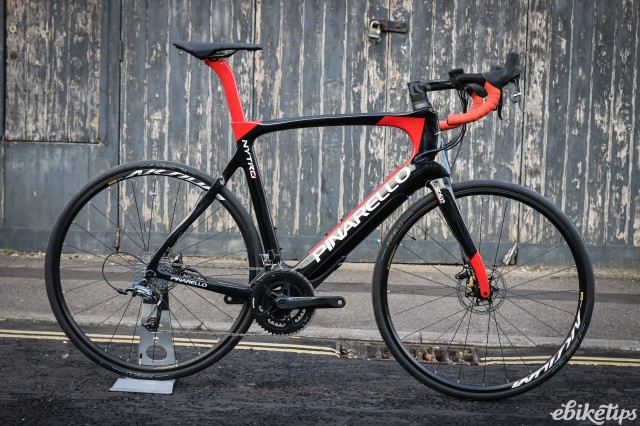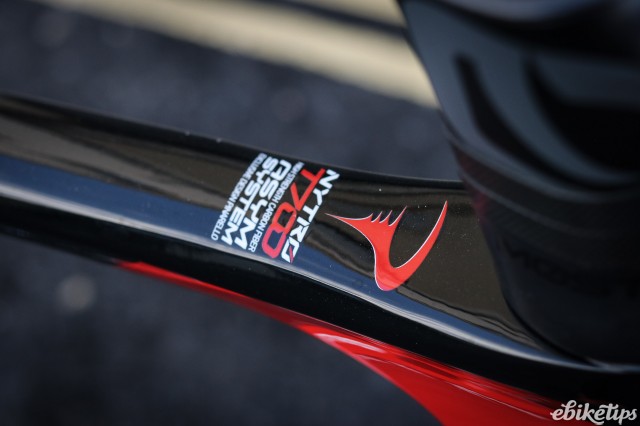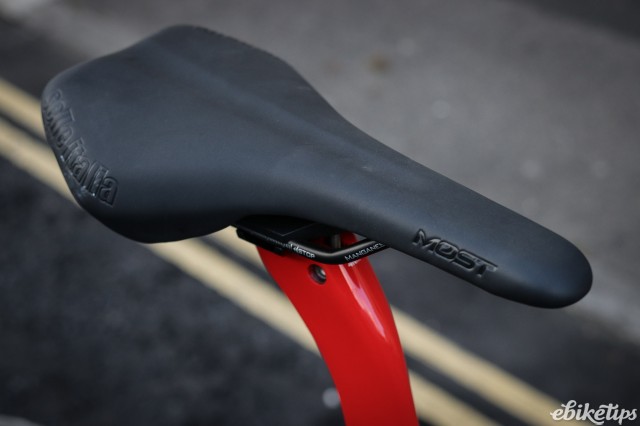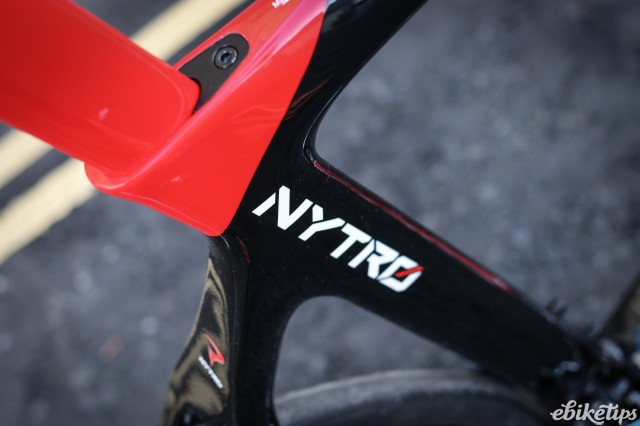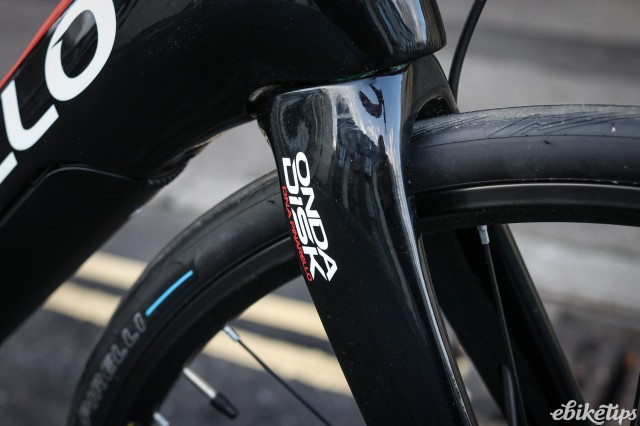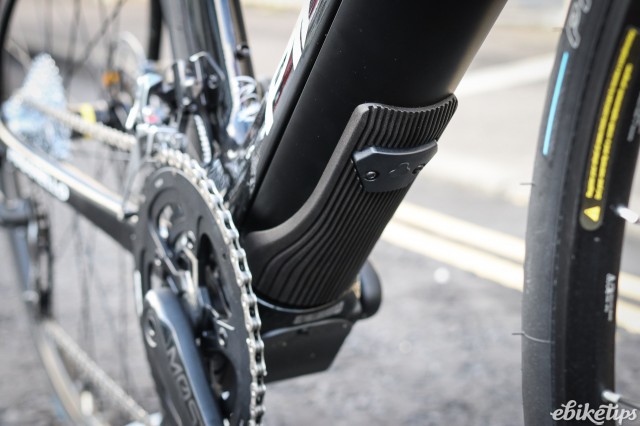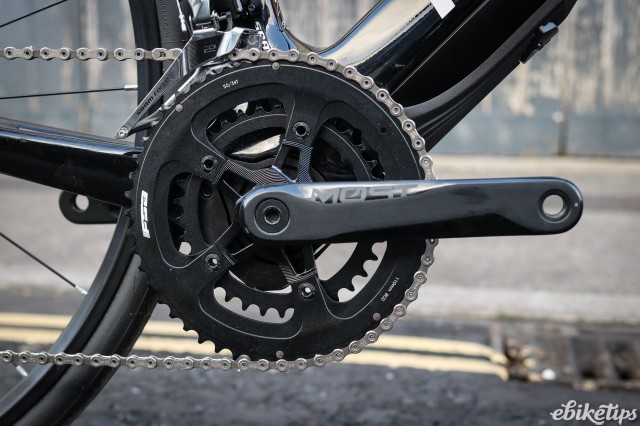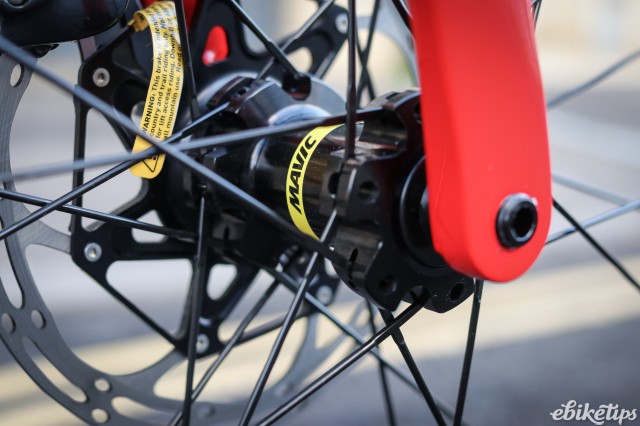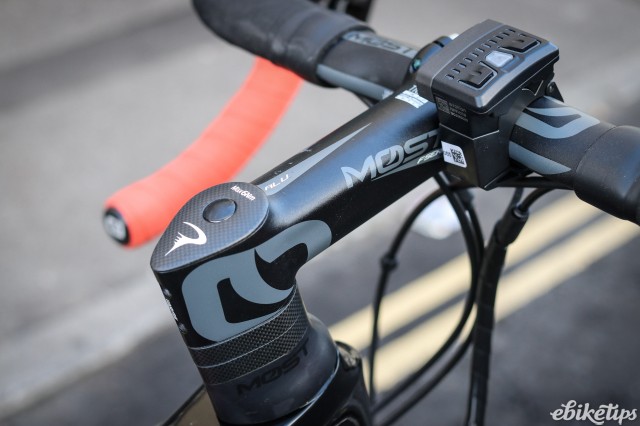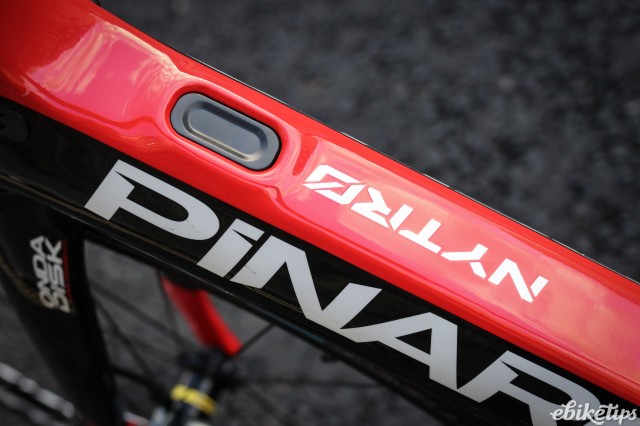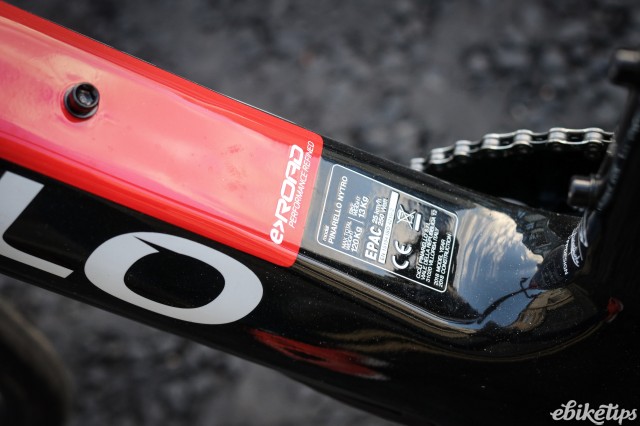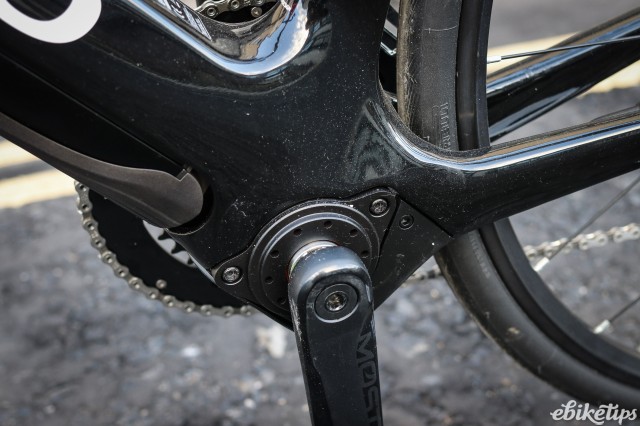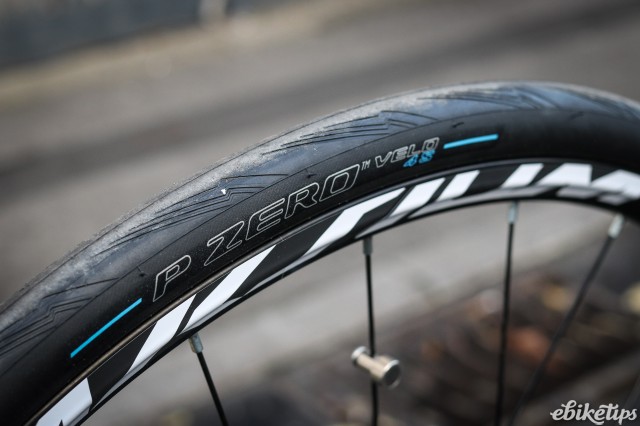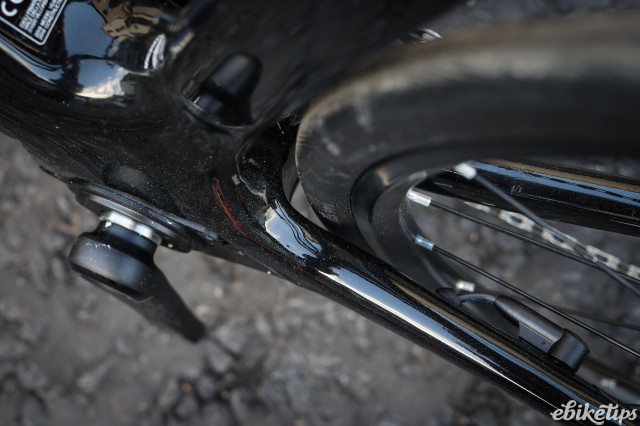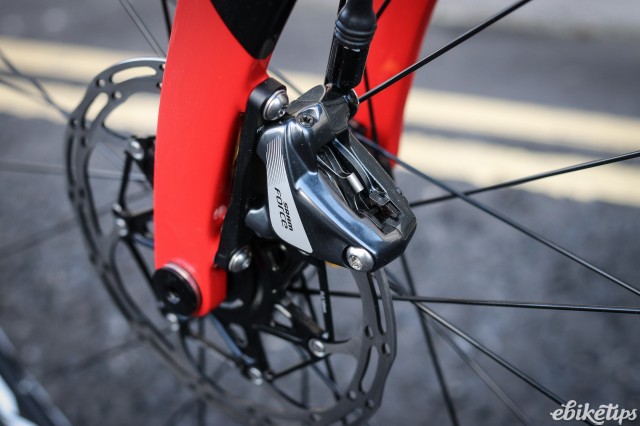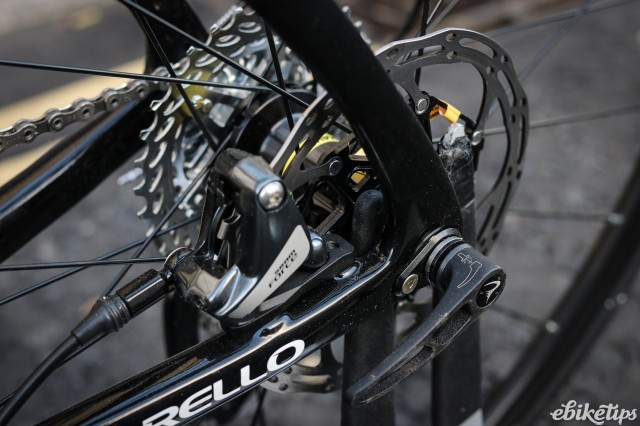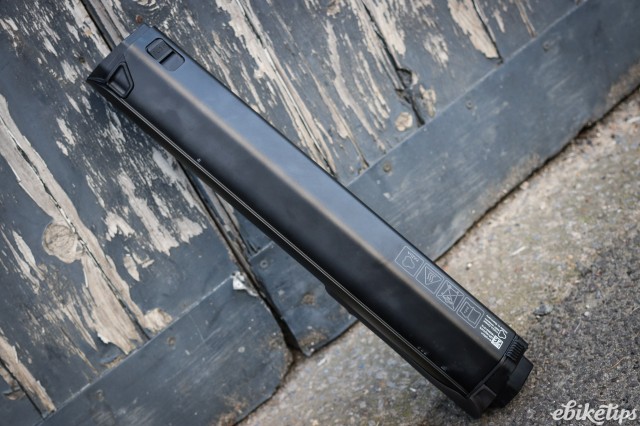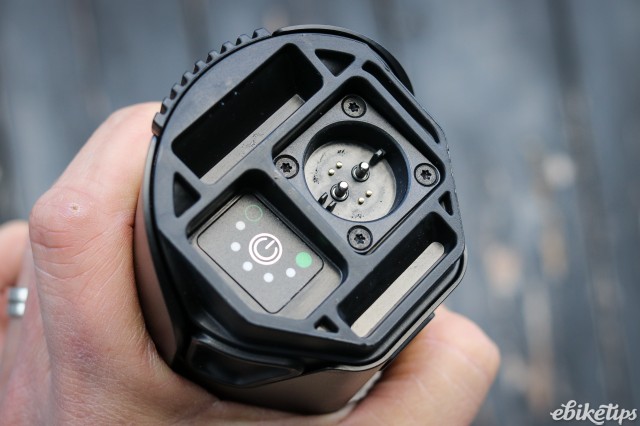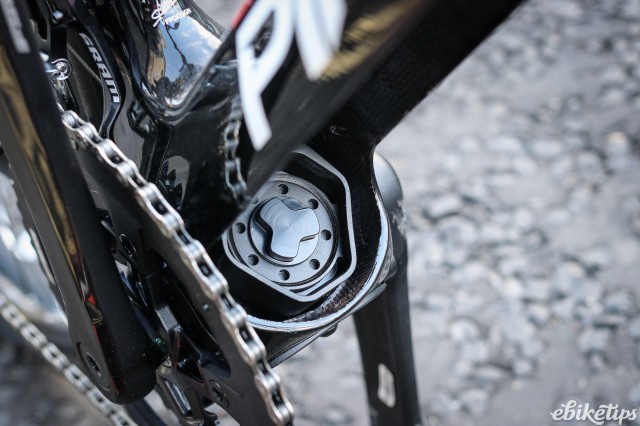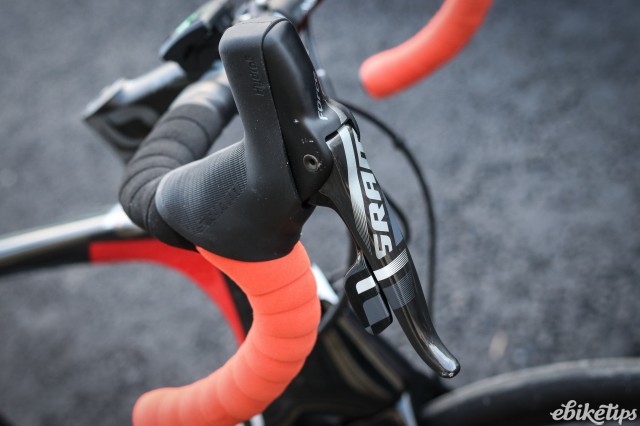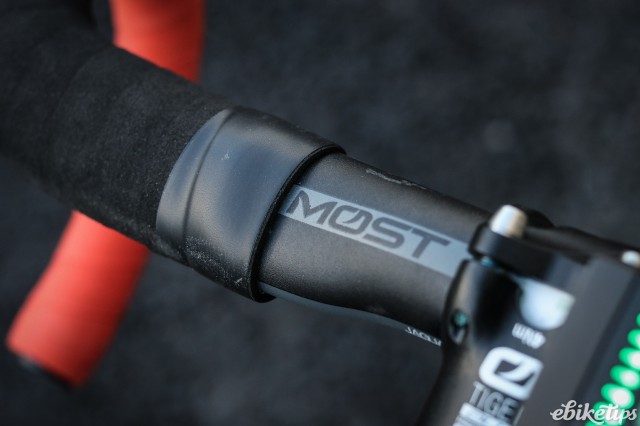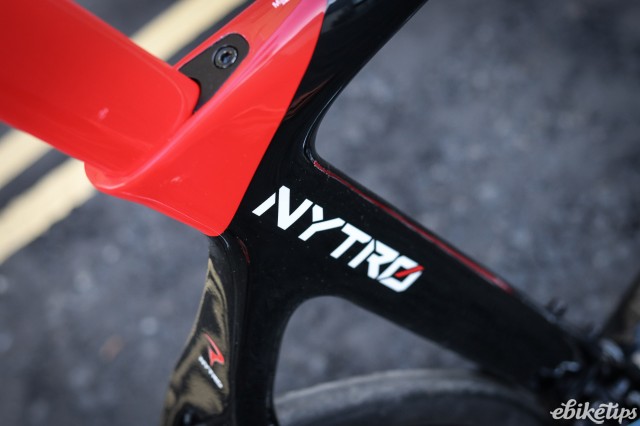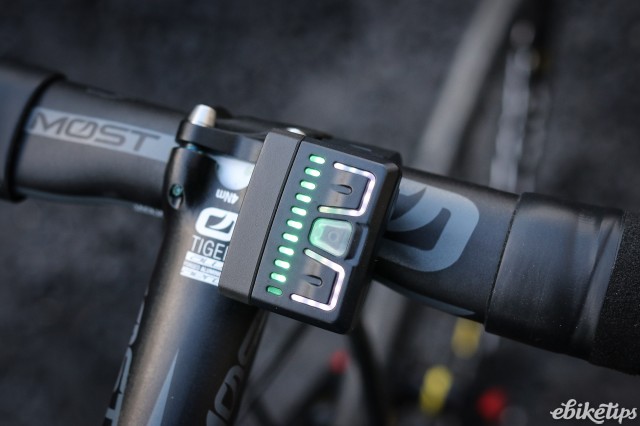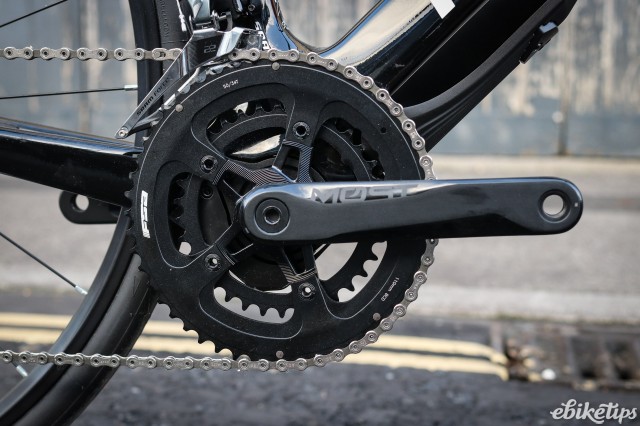Pinarello Nytro
Overview
- High quality frame and fork with comfortable ride
- Good assistance from the Fazua motor
- Good spec throughout
- Expensive compared to some rivals
- Not the lightest in the market
Pinarello’s Nytro is the company’s first attempt at an e-road bike and it acquits itself very well: it’s fun to ride, the motor gives useful assistance and the range is good enough for a decent day's riding. Given the spec level it feels a bit expensive compared to some of its competitors, but the overall experience of the bike has been very positive.
Tour-proven frame technology
The Nytro is based on Pinarello’s Gan Disc, which is itself derived from the Tour-de-France-winning Dogma F8, so you’re getting some frame pedigree here. The F8 is a pure race bike, and the Gan was designed to be a bit more approachable: the geometry is a bit less aggressive and it uses lower grades of carbon fibre which sacrifice a little bit of the top-end stiffness but that makes the bike more comfortable to ride.
The Nytro is slightly more relaxed again than the Gan, and although it’s certainly no slouch it’s very evident from the first ride that it’s actually a very comfortable bike, as well as being very capable. The large tube profiles (especially the giant down tube housing the battery and motor) and the aero seatpost don’t look like they’ll budge a millimetre, but actually the frame, coupled with the larger chamber 28mm Pirelli tyres, combine to produce a bike that’s surprisingly easy to get on with on a longer ride.
The position is purposeful without being aggressive or uncomfortable, and on the very varied road surfaces around here it was evident that the Nytro does a very decent job of mitigating the lumps and bumps along the way. The distinctive shape of the Onda fork – which stays wide quite high up the fork leg before curving into the crown – is designed to improve steering response, and the Nytro tracks extremely well even when cornering fast and hard. The SRAM hydraulic brakes sometimes ping and grumble on muddy lanes as there is minimal clearance between the pads and the rotor, but when you want to stop in a hurry there’s masses of power available and the grip from the tyres is excellent.
High quality removable motor system
The Fazua Evation motor is one of two systems that make up the majority of the e-road market, the other being ebikemotion’s rear hub system as used by Wilier and Orbea, among others. The Evation is a mid motor, meaning that it drives the pedals directly; the motor and the battery sit in the Nytro’s huge down tube, with a gearbox sitting in place of the standard bottom bracket.
Fazua claim an output of 400W/60Nm, but that seems optimistic: it would put the Evation more or less on a par with Bosch’s Performance Line motor, which it certainly isn’t in terms of the level of assistance available.
The assistance that is there is well-judged, though. You don’t need masses of power on top of your legs to make mincemeat of your local climbs, or to keep up with riders that are younger/stronger/fitter than you. Measuring power with a set of power pedals, I found that my average power for the same hour-long hilly lap at the same speed (about 28km/h) was around 50W less (227W vs 278W) when using the Nytro compared with a standard lightweight road bike. Those numbers might not mean too much to you, but for me that’s the difference between riding at under 75% of my Functional Threshold Power (the power I can keep up for an hour) – which is a pretty easy effort – and about 90% of FTP, which is definitely not easy. At all. That’s the sort of average power I’d expect to have to put out in an actual race.
There are three levels of assistance (green, blue and purple, the highest) which are accessible via the bar-mounted remote. The remote also gives you an idea of the battery life with ten LEDs winking out one by one as you use the juice. The bar remote is functional but not exactly pretty; it could probably do with a revamp in my opinion. Green mode is plenty for nearly all of a ride for me, and I only really change up to the higher modes on sustained climbs. The Evation system is pretty good even on steeper climbs, making percentages well into the teens easily manageable, even if you’re having to chip in with some of the effort yourself.
One of the Fazua system’s unique features is that you can drop the motor and the battery out as a single unit, leaving just a gearbox at the bottom bracket. Oh, and a big hole in the frame, that you can cover with a blanking plate. That drops the weight of the Nytro to around 10kg, and the bottom bracket gearbox doesn’t add any meaningful drag to the transmission, so you can ride the Nytro around without the motor should you so desire. It’s an interesting extra feature, but in reality I’m not sure it’s really one that’s going to get a great deal of use: most people will be buying this bike because they want or need the assistance.
Plenty of range for a big ride
250Wh isn’t a big battery but e-road bikes tend to pack plenty of range, because there’s a good proportion of every road ride where you either need just a bit of assistance, or you’re rolling along above 25km/h and the motor is off anyway.
I’ve completed some reasonably long rides on the Nytro. On one 85km ride I had the motor on low all the way round, so it kicked in whenever I dipped under the 25km/h mark. On the steeper stuff I gave my legs a bit more of a rest on the higher modes, and in all there was around 1,200m of climbing. When I got back home I had two bars of battery left, so I probably would have run out around the 100km mark. If I’d been more frugal with the assistance and just turned it on for the bigger climbs then my range would have gone out even further. For a hilly day-long ride there’s plenty in the tank, though.
Some rides are easier than others
It’s worth noting at this point that how much you gain from the motor, and how much you use the battery, depends on whether you’re riding with a group or riding alone; or at least it does for me. When I’m out on my own I’ll take it easier on the flatter sections, such that when there’s a slight uphill I’ll dip down below the assistance limit and get a bit of a helping hand. I end up using a bit more battery when I’m riding solo.
When you’re out in a group those flatter sections tend to be harder as it’s easy enough for a group working together to stay above the 25km/h limit even on rolling roads. If you find yourself in the midst of a group that’s pushing on across the rollers like that, that’s the one time when you really feel the 14kg weight of the Nytro: you’ve got the 5kg weight penalty, and you’re not getting any benefit.
The difference between riding in a group and riding on your own is noticeable in the ride stats. After that 85km group ride the average power I was putting out wasn’t much lower than it would normally be without a motor, and of course my average speed was the same, as I was staying with the group. On my reference lap of the Mendips (25km with 450m climbing) where I was riding on my own at a comfortable pace, my average speed on the Nytro was over 28km/h, which is much higher than it would be on a standard bike, and when I tried to replicate the same speed on a standard road bike I just about killed myself in the process. So where you’re choosing your own speed, and where to apply the assistance, you’re definitely quicker on an e-road bike; or if not quicker, doing the same lap at the same speed for much less effort. In a group, the gains are less obvious. You have to wait for everyone at the top of the climbs anyway, so there’s no point darting off, and on the flat you’re sometimes at a disadvantage. As always, it depends on who you’re riding with. If your group rides are more social, and it’s just that you tend to get left behind on the hills, an e-road bike would probably be just the ticket.
You can get a similar spec level for less
No doubt about it, six grand is some serious wedge to be throwing at a bike. That doesn’t mean that there won’t be people out there happy to pay it, but in terms of value it’s not top of the list in this sector. The most obvious comparison is with the Cube Agree C:62 Hybrid SL Disc (catchy name) which we reviewed last year. The 2019 bike has had a bit of a boost in terms of spec: it now uses Shimano’s Ultegra hydraulic brakes and shifters, and the spec level is broadly the same, but it’s £1,500 cheaper. The Focus Paralane2 9.8 is more expensive than the Nytro, at £6,399, but you’re getting a Shimano electronic groupset, DT Swiss wheels and a stated weight (we’ve not weighed it) that’s a kilo under the Pinarello. The Pinarello name has plenty of cachet, and I’ve found the Nytro to be a comfortable and fun bike to ride, so if the money’s burning a hole in your pocket and a Pinarello’s what you’ve decided you want, you’ll not be disappointed with this bike.
www.pinarello.com
|
FRAME |
|
DRIVE SYSTEM |
|
BRAKES |
2 comments

Either of those bikes would manage a 10km climb on a lower setting. of the two systems my preference is for the ebikemotion motor; the two systems are comparable in terms of power but the ebikemotion system is lighter and builds into a neater-looking bike. ebikemotion will soon have a range extender battery available too: https://www.ebikemotion.com/web/x35-range-extender/
Hi Dave,
Having ridden both the Ebikemotion and Fazua bikes do you find one has more drag over the other when free wheeling and when you break through the 15.5mph restriction?
I am considering either the Cube or Orbea and would be interested in your views, especially on distance. I tend to go to the alps once a year and wondered if you think on a lower setting either bike would manage a 10km climb, or is that more 500W battery territory?
